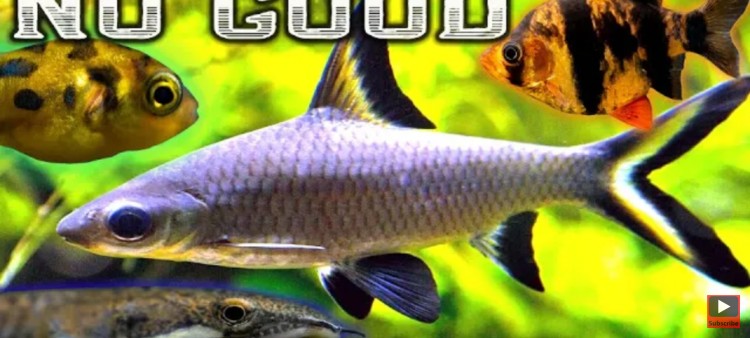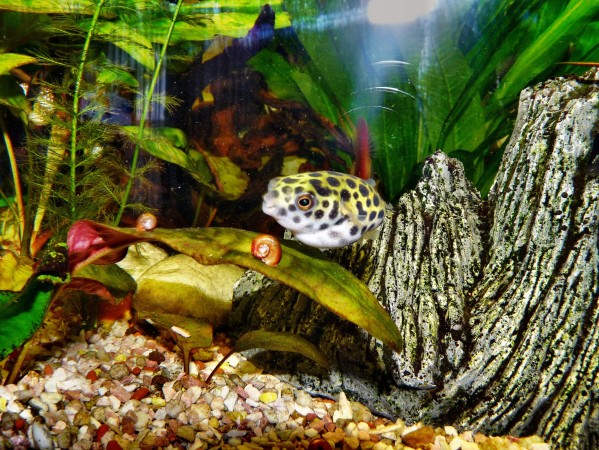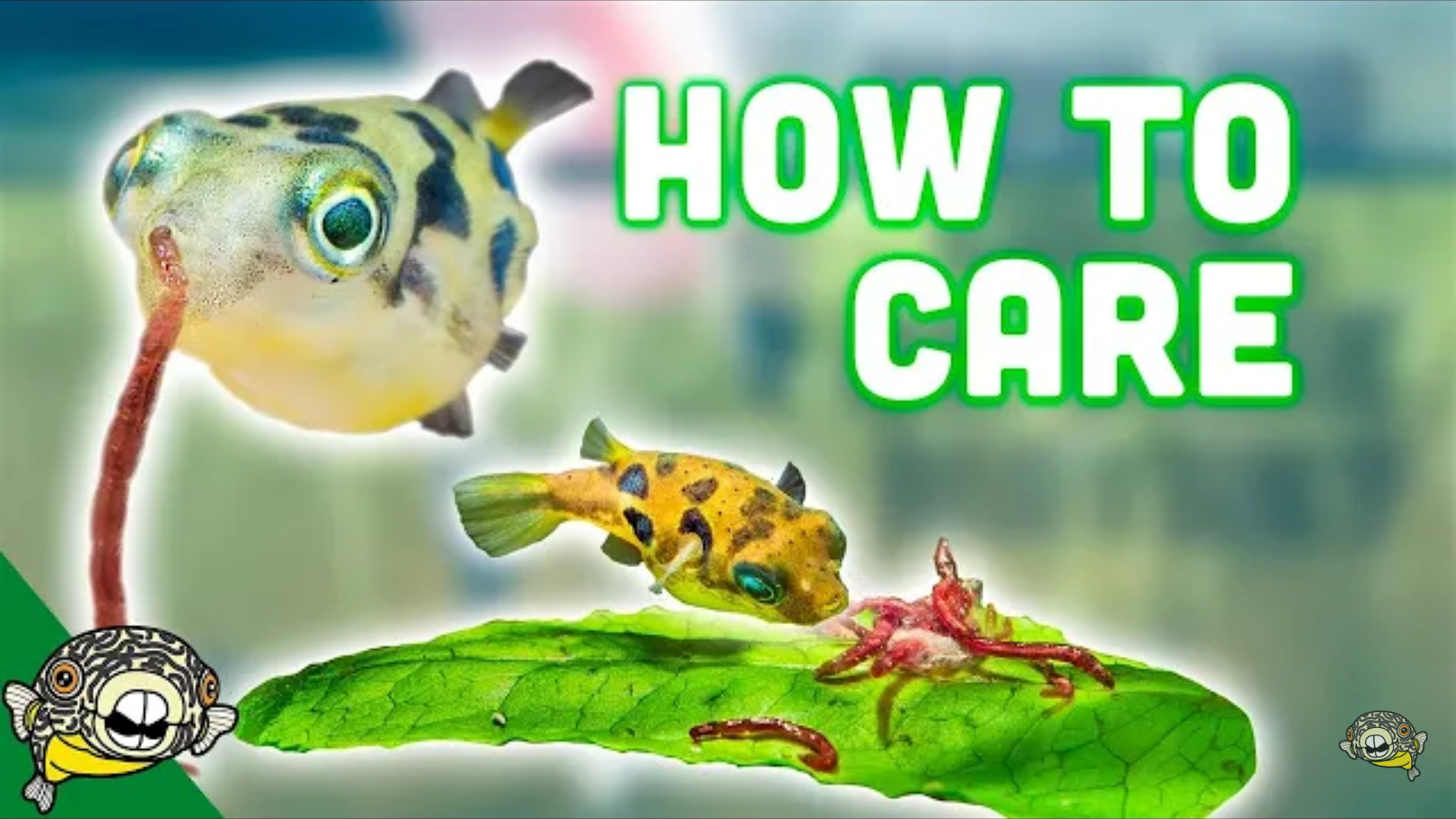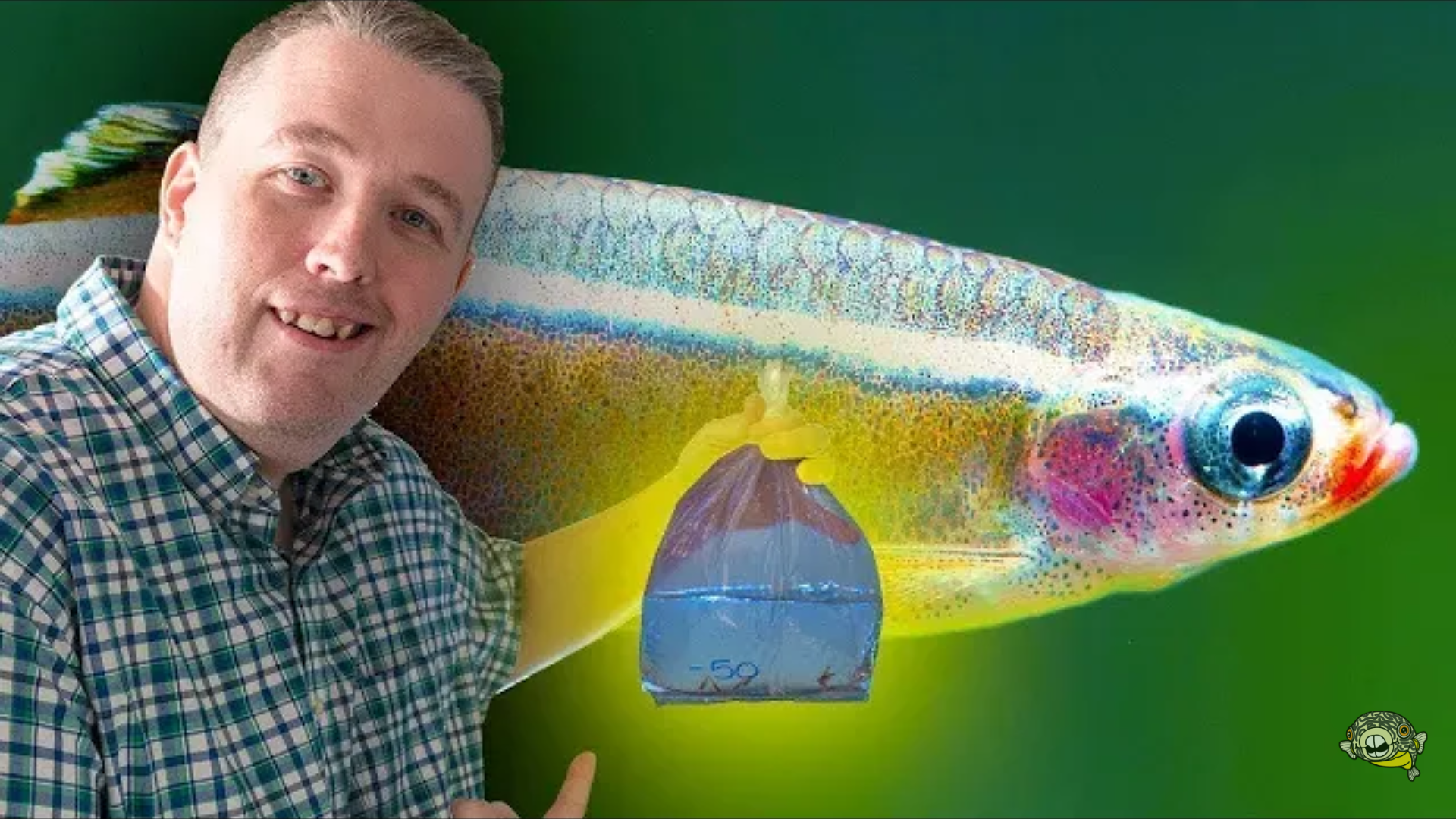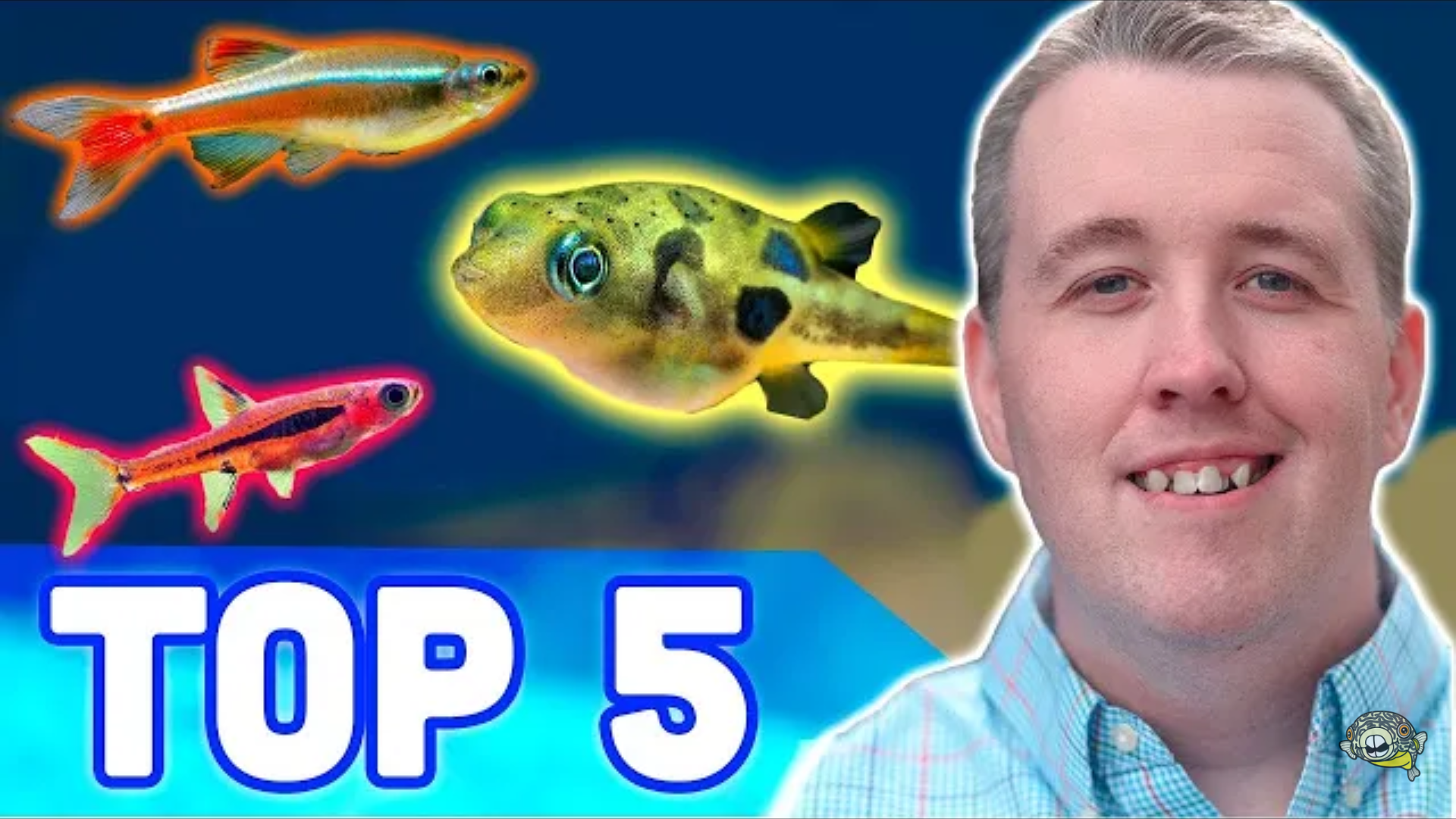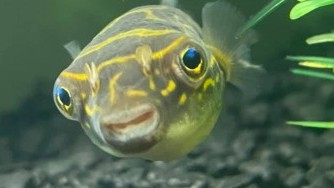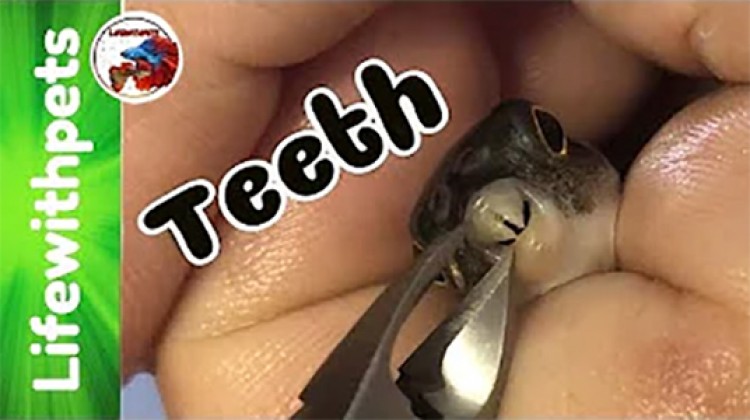- Name:
Dwarf Puffer
(View AKA's) - Family: Tetraodontidae
- Species: Puffer
- Scientific Name: Carinotetraodon travancoricus
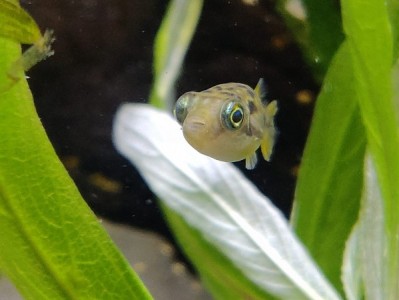


General info about Dwarf Puffer
These fish are called puffer fish because they have the ability to inflate their stomachs with water and air. Another interesting characteristic is that their eyes are able to move independently from one another which allows them to observe their surroundings without moving. Regarding their physical characteristics they are brownish green with dark spots all over their bodies and reach only one inch in length. After some time in the tank they will start to recognize their owners. To keep these fish in captivity, water pH should be between 6.8 and 8.0 and water temperature should range from 72°F to 82°F The tank should have plants, floating vegetation, caves and other hiding places. The tank should also have a cover since these fish may jump when scared. They shouldn’t be kept in community tanks since they are fin nippers and quite aggressive, as such they should be kept in a species only tank in a group of at least 6. 2 to 3 gallons are the minimum recommended for a single fish.
Dwarf Puffer Diet & Nutrition
This species is carnivorous. They should be fed with live food like worms and shellfish since they refuse to eat dried and frozen food.
Determining Sex of Dwarf Puffer
Males have a brown vertical stripe along their bellies while females don’t.
Breeding & Spawning Dwarf Puffer
To breed this species in captivity, there should be a group of females to just one male. The breeding tank should have dense vegetation and a water temperature around 82°F.
Dwarf Puffer Origin
This species is native to India. It inhabits slow moving, densely vegetated areas.
Acclimating Dwarf Puffer
The water in which these fish are packaged is different from the water in the tank, since these fish are extremely sensitive to water conditions the acclimation process is very important. This process should never be rushed. Aquarium lights should be off for at least the first 4 hours of the fish in the new tank and it should not be fed in the first 24h. There are two acclimation methods: Floating Method and the Drip Method.
Floating method - the aquarium lights should be off and lights in the room should be dim, the bag in which the fish is should be placed in the surface of the water to float for about 15 minutes, this allows the water in the bag to adjust to the water in the tank. The bag should then be cut under the knot and the top edge of the bag should be rolled down one inch, then ¼ cup of the aquarium water should be added to the bag, this step should be repeated every 4 minutes until the bag is full, then half the water of the bag should be discarded and the bag should be put to float again and ¼ cup of the aquarium water should be added to the bag every 4 minutes until the bag is full. Afterwards, the Discus can be moved into the aquarium.
Drip method – the aquarium lights should be off and lights in the room should be dim, the bag in which the fish is should be placed in the surface of the water to float for about 15 minutes, this allows the water in the bag to adjust to the water in the tank. The bag contents should be poured into a 1 gallon bucket that has never been cleaned with any chemicals, the fish should be enterally submerged. A siphon, using airline tubing, should be set up and a drip line should run from the main aquarium to the bucket. Several loose knots should be tied in the airline tubing to regulate flow. Sucking the end of the airline tube that goes to the bucket will begin a siphon, the flow should be regulated to 2 to 4 drips per second. Once the water in the buckets doubles, half should be discarded and the process should be repeated until it doubles again. Afterwards, the fish can be moved to the aquarium.
Dwarf Puffer are Venomous
Their flesh is toxic and can cause poisoning and even mortality.
Original Detail
| Name | Species | Family | Scientific Name | More Detail | Added by |
|---|---|---|---|---|---|
| Dwarf Puffer | Puffer | Tetraodontidae | Carinotetraodon travancoricus | These fish are called puffer fish because they have the ability to inflate their stomachs with water and air. Another interesting characteristic is that their eyes are able to move independently from one another which allows them to observe their surroundings without moving. Regarding their physical characteristics they are brownish green with dark spots all over their bodies and reach only one inch in length. After some time in the tank they will start to recognize their owners. To keep these fish in captivity, water pH should be between 6.8 and 8.0 and water temperature should range from 72°F to 82°F The tank should have plants, floating vegetation, caves and other hiding places. The tank should also have a cover since these fish may jump when scared. They shouldn’t be kept in community tanks since they are fin nippers and quite aggressive, as such they should be kept in a species only tank in a group of at least 6. 2 to 3 gallons are the minimum recommended for a single fish. |
Gokhan MERMERTAS |
Changed by users
| Submitted Date | Submitted By | Status | Action |
|---|



